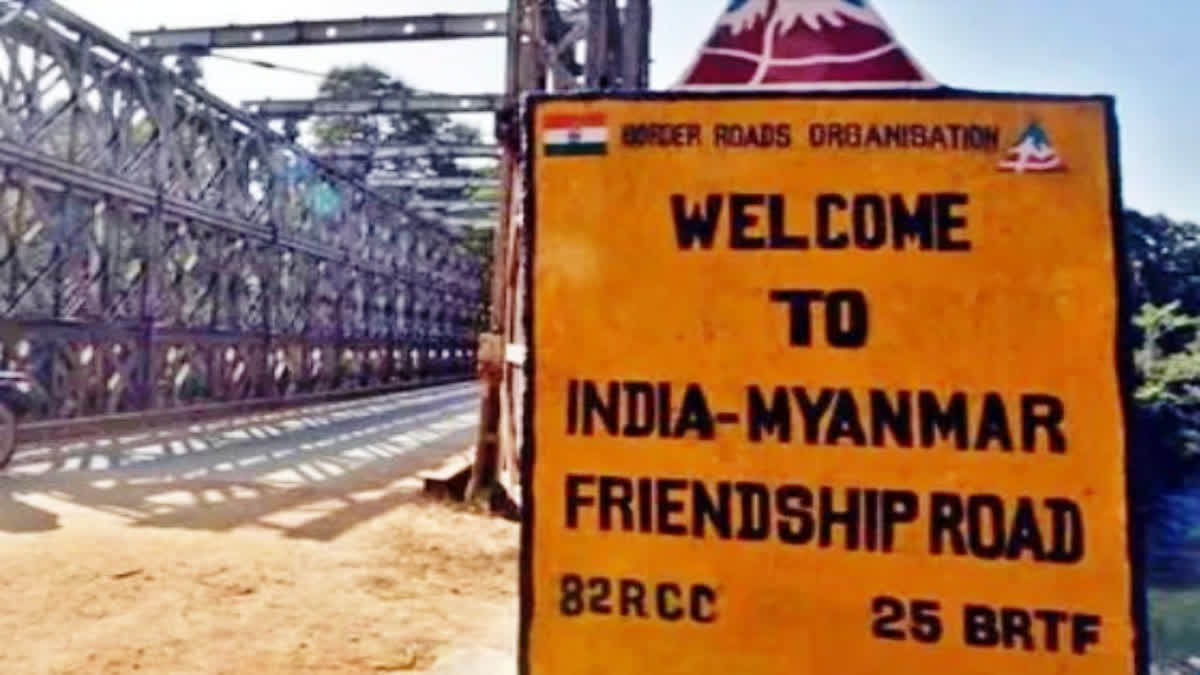New Delhi: Amid the ongoing violence in Manipur, an intelligence bureau (IB) report has revealed that insurgents of the state, be it those from the valley or hills, are engaged in hit-and-run operations from their safe havens in Myanmar.
On Friday suspected Meitei militants dressed as security personnel killed three people including a woman at Khoken village bordering Kangpokpi and Imphal West district of Manipur. So far, nearly 100 people lost their lives and over 300 injured ever since the ethnic violence broke out over a month ago.
The IB report stated that the porous border is helping the militants accomplish their mission. India and Myanmar share a long border of over 1600 km. Four North-Eastern States including Arunachal Pradesh, Nagaland, Manipur and Mizoram share their international boundary with Myanmar.
“Insurgents of Manipur with the help of Myanmar are able to run their business well in India. The porous border gives them advantages to carry out all their plans including carrying out attacks on security forces, escaping safely after their attack, smuggling arms and grenades to the valley to carry out attacks, threatening the people on the phone, kidnapping and detaining people,” the report said.
The report stated that cross-border smuggling, trafficking of drugs, humans, artefacts, fake Indian currency notes (FICN), illegal immigrants, wildlife trafficking, and illegal goods are the major concerns for security agencies.
“In the recent past, sudden demographic changes are observed and analysis shows that law enforcement agencies could detect and identify considerable numbers of immigrants who have infiltrated through the porous borders. However, ethnic homogeneity in the border areas with the populace of the neighbouring country is a major issue for the security agencies,” the report stated.
It said that ethnic conflicts in Manipur and separatist movements in Myanmar have added fuel to the changing demographic profile of borders and the shift in the ethnic balance of communities is the result of illegal migration in the border districts of Manipur.
Manipur has close proximity to the 'Golden Triangle' since its borders Myanmar. Golden Triangle includes the areas of Myanmar, Laos, and Thailand where the cultivation and production of drugs is highly prevalent.
“Drugs including opium, heroin, methamphetamine, WY (Yaba) tablets and many more are smuggled from Myanmar into the northeast. After the recent changes in the Golden Triangle, the search for new areas for cultivation of drugs found Manipur’s climate, topography and security conditions as suitable alternatives,” the report said.
Now drugs are illicitly cultivated in India, especially in the border areas of Manipur, and they travel through the same route for trade. Cheap ephedrine- and pseudoephedrine- based anti-cold medicines are trafficked from North India to Myanmar through Moreh. They come back through the porous border as methamphetamine variants for peddling across India and Bangladesh, the report said.
It further said that the main entry and exit point for illegal goods is Moreh. "Roughly 80 per cent of the items are being smuggled at or near Moreh. Smuggling has long been a problem along the porous Myanmar-India border, which has also benefited the various local ethnic insurgent groups,” the report said.
Also read: Govt sets up committee in Manipur to facilitate peace-making process



